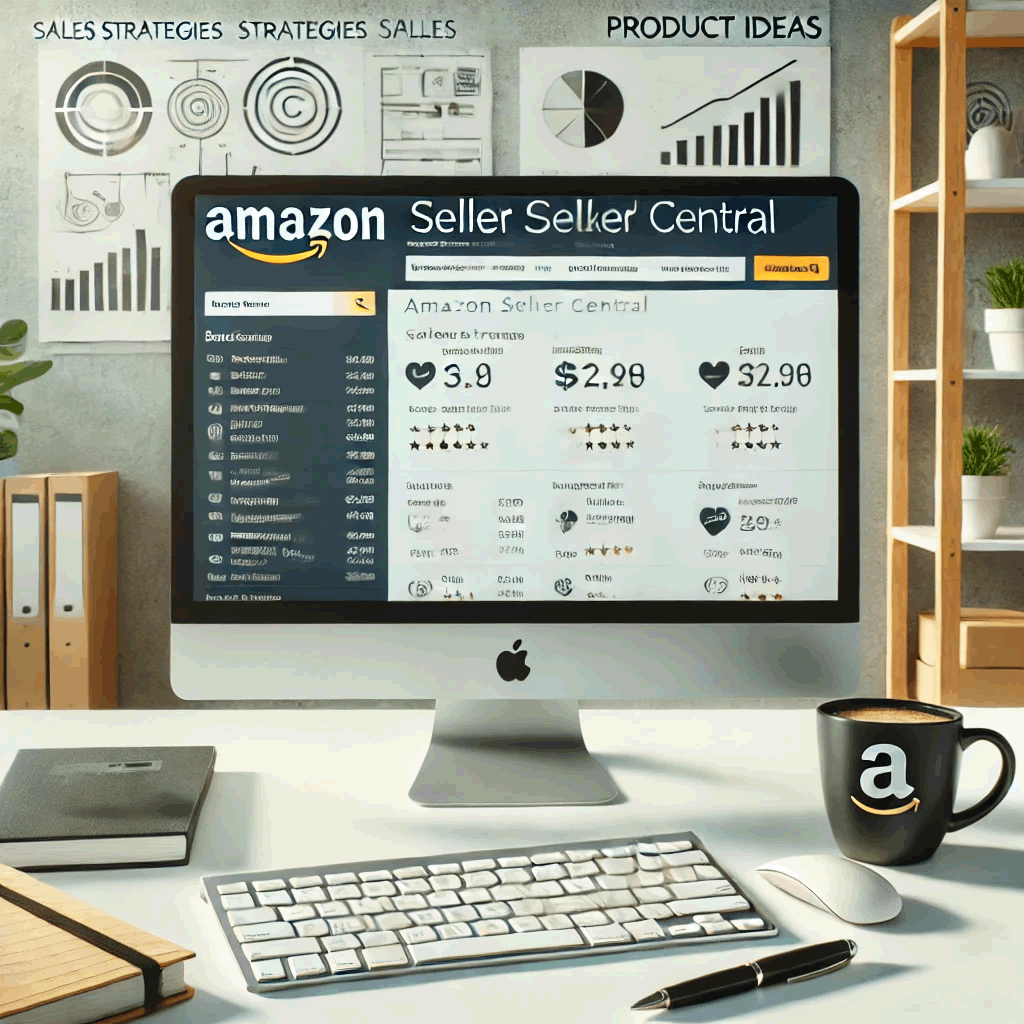If you want to grow your sales business on Amazon Retail, looking at the right data is essential. Fortunately, Vendor Central offers a retail Analytics panel to inform your strategy with the electronic commerce giant: Amazon Retail Analytics or Ara
In this article, we will see in detail each report that presents Central Vendor, so that when you finish reading it you have a better understanding of how to use Retail Analytics and where to find the metrics that really matter, which will allow you to make decisions based on data to support the profitable growth of your business in Amazon.
Index
Understanding the foundations
First let's analyze some basic concepts to reduce confusion when using Amazon data panels in Central Vendor.
Differences between Retail Analytics and Brand Analytics
The Retail Analytics panel includes metrics about the commercial and operational performance of your seller account . It is divided into: sales, inventory, traffic, forecasts, net margin PPM and catalog.
On the other hand, the Brand Analytics panel provides data on the behavior of buyers on Amazon with your products and brand . It includes aspects such as repeated purchase behavior, more popular search terms and purchasing basket analysis.

Manufacturer view vs. Supplier view
In Central Vendor there are two available views: the manufacturing view and supply view.
Manufacturing view: It is only available for manufacturing brands on Amazon. Show the added sales and inventory performance of your brand, regardless of where or who the products have been obtained. That is, the metrics shown are not always directly linked to the performance of your account, because they can include products obtained from distributors and wholesalers. The manufacturing view also includes inventory of panel and cross -border origin.
Supply view: Sample metrics that are directly related to the performance of your account. It reflects the real sales and inventory that Amazon has sold and obtained only from your inventory.
Data comparison: Previous period vs. Year on year
When you use Retail Analytics, you will often have the option to compare your data set with the previous period or year over year.
PREVIOUS PERIOD: Amazon compares your data with the same period before the currently selected. For example, if you are seeing January data, the previous period refers to December.
Year on year: Amazon compares your data set with the same period of the previous year. For example, if you are seeing January data this year, your data with January last year are compared.
Sales report
The sales panel allows you to quickly identify which products contribute to your general sales yield . List each product sold in the selected period of time and shows the value in euros, the ordered and sent units, as well as customer returns.
Kpi to review:
- Ordered income: sales income that has not yet been sent to Amazon customers.
- Revenued: sales income that have already been sent to customers.
- Cost of goods sold (COGS) dispatched or sent: cost of goods sent to customers.
- Customer returns: number of articles returned by customers.

Real -time sales report
For sellers who make price promotions regularly and need information on the live sales performance of their catalog, Amazon has launched the sales panel in real time. It allows you to see the sales of your products in real time , which is useful for days with high sales volumes, such as Prime Day or Black Friday.
Kpi to review:
- Ordered income
- Ordered units
Inventory report
The inventory report includes vital information to measure the operational health of your account. you what products are out of stock and which have accumulated excess inventory . The panel also shows your order confirmation rate and how much Amazon has obtained from your brand in the selected period.
Kpi to review:
- Supplying product outside stock
- Seller's confirmation rate
- Net units received
- Open purchase order amount
- Varable inventory in hand
- Rotation rate
- Non -healthy inventory
Traffic report
It only contains information about the number of impressions on the details page of your listings . However, together with the metric of ordered units of the sales report, you can use the detail views to calculate the conversion rate of your products (conversion rate = ordered units ÷ Detail views).
Kpi to review:
- Detail views: number of times buyers visualized your product details page on Amazon.
Forecast Report
One of the most important data panels is the forecast tool in Retail Analytics. It gives you access to the Amazon demand forecast, which includes medium, P70, P80 and P90 estimates .
It is important to note that the prognosis is oriented to demand and not to purchase. This means that Amazon's real order volume towards you as a seller can differ from its forecast in central vendor.
Kpi to review:
- Average forecast: Better Amazon estimate on the weekly demand of customers for the next 1-48 weeks. This estimate does not consider the security stock.
- P70 forecast: estimate where Amazon predicts, with 70% probability, that the future weekly demand will be in or below this value.
- P80 forecast: estimate where Amazon predicts, with an 80% probability, that the future weekly demand will be in or below this value.
- P90 forecast: estimate where Amazon predicts, with 90% probability, that the future weekly demand will be in or below this value.
PPM Net Margin Report
Amazon's net PPM margin is the main metric for each supplier manager. Therefore, it is critical that monitor the margin performance of your portfolio. Fortunately, the Net PPM margin report in Central Vendor allows you to do that precisely.
It is important to note that the net PPM margin measures product profitability after taking into account the cost of goods, seller financing and sales discounts . This represents a fundamental change in the new Retail Analytics panel, because previously sales discounts were not included in the net PPM margin of central vendor.
Kpi to review:
- Net margin PPM: Acronym of Net Margin of Pure Product. It is the main metric that Amazon communicates to vendors. Net margin PPM = (income sent - COGS sent + compensated COGs - Sales discount) ÷ Revenue sent.
Catalog report
The Catalog Report section in Vendor Central allows you to analyze and monitor the quality of your catalog at Amazon . This is particularly useful if you want to ensure that the products are refueling or if you want to understand if a product requires any additional preparation that can lead to charges for penalty in the account.
Kpi to review:
- Product group: The product group in which an ASIN is listed with Amazon.
- Reference category: Indicates whether a product will be rearranged again by Amazon.
- Required preparation instructions: Refers to the current preparation instructions of an article on Amazon. For example: ASIN labeling, embolled, packed, bubble wrapping, etc.
- Seller's preparation status: Describe who issued or certified the preparation instruction for an article.
Conclusion
Using Amazon's retail panel in Central Vendor can change the way you manage and grow your business on the platform.
From the understanding of sales and inventory to the optimization of your catalog and the anticipation of future demand, each section of the panel is a powerful tool to make informed and strategic decisions. By dominating these reports and metrics, you will be better equipped to maximize your sales opportunities and ensure long -term success in Amazon.
Therefore, if you have not yet explored Amazon Retail Analytics, now it is time to start.

